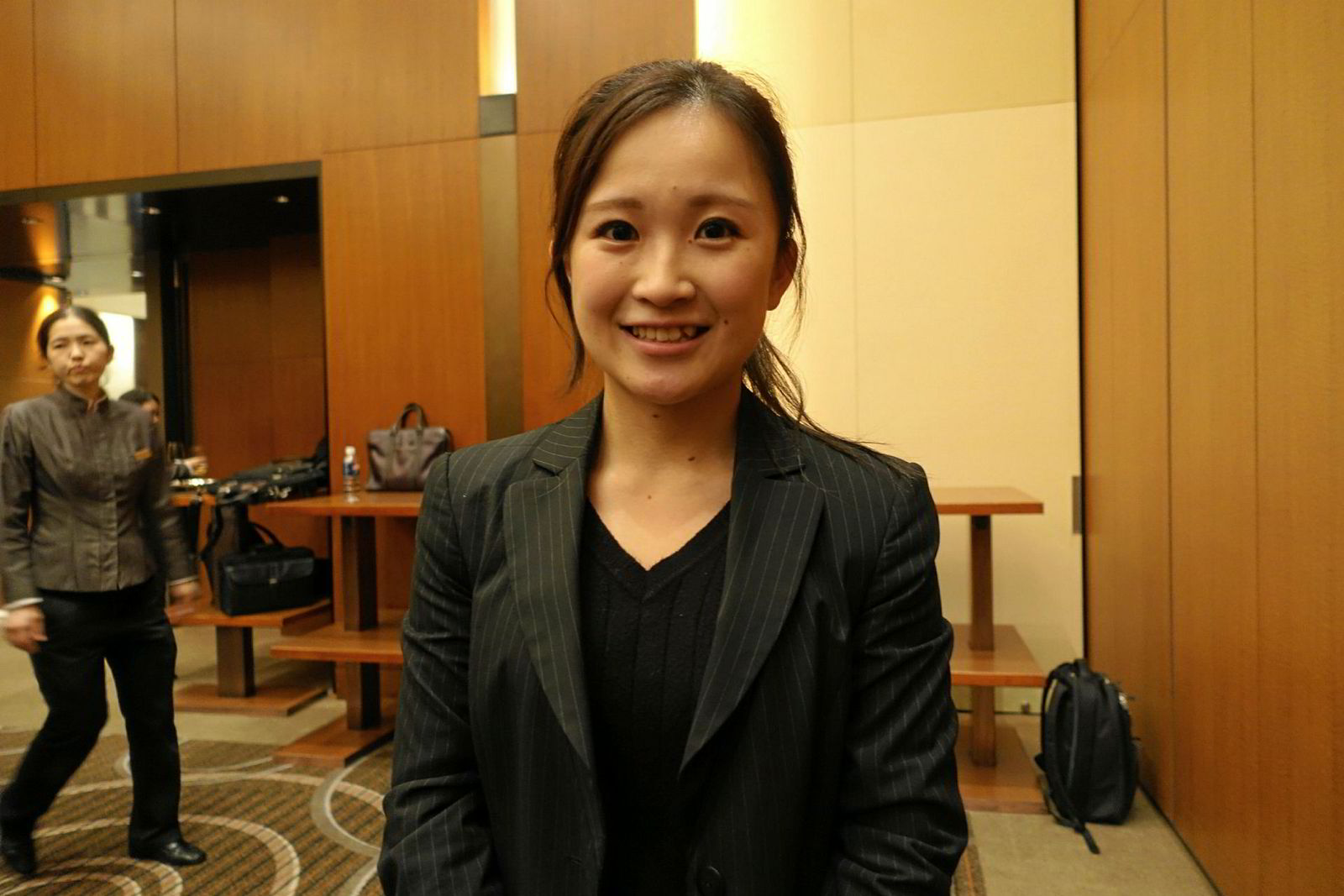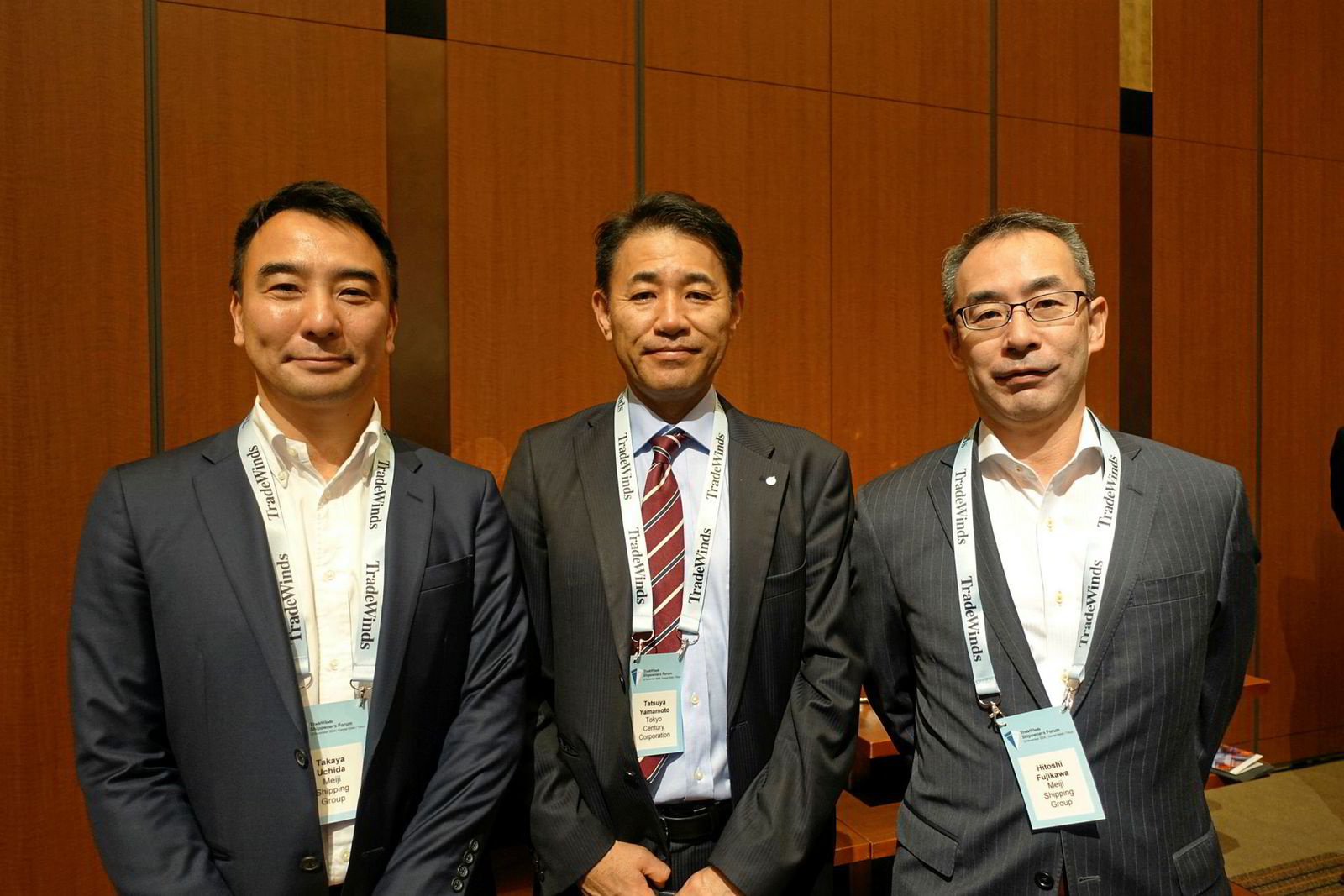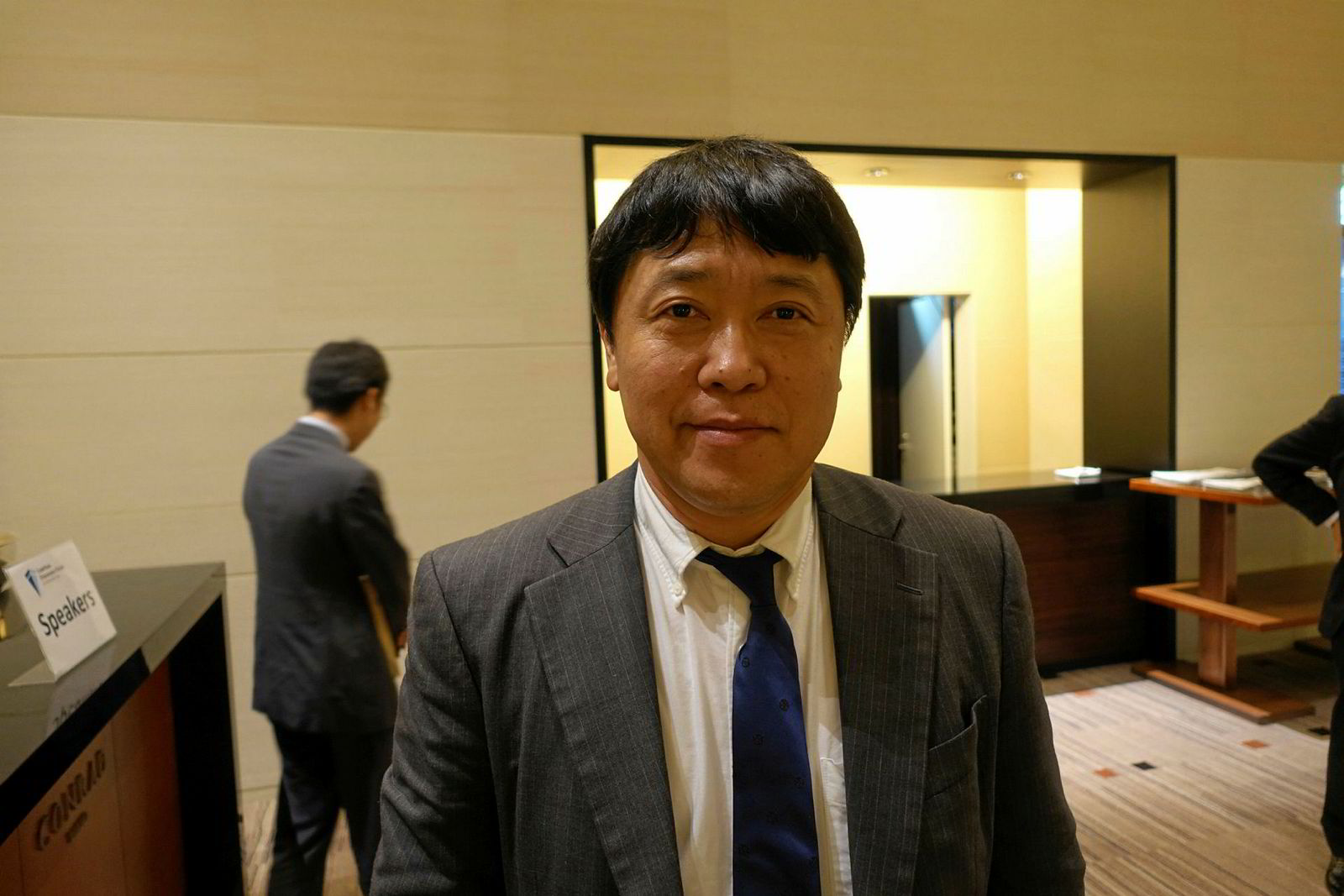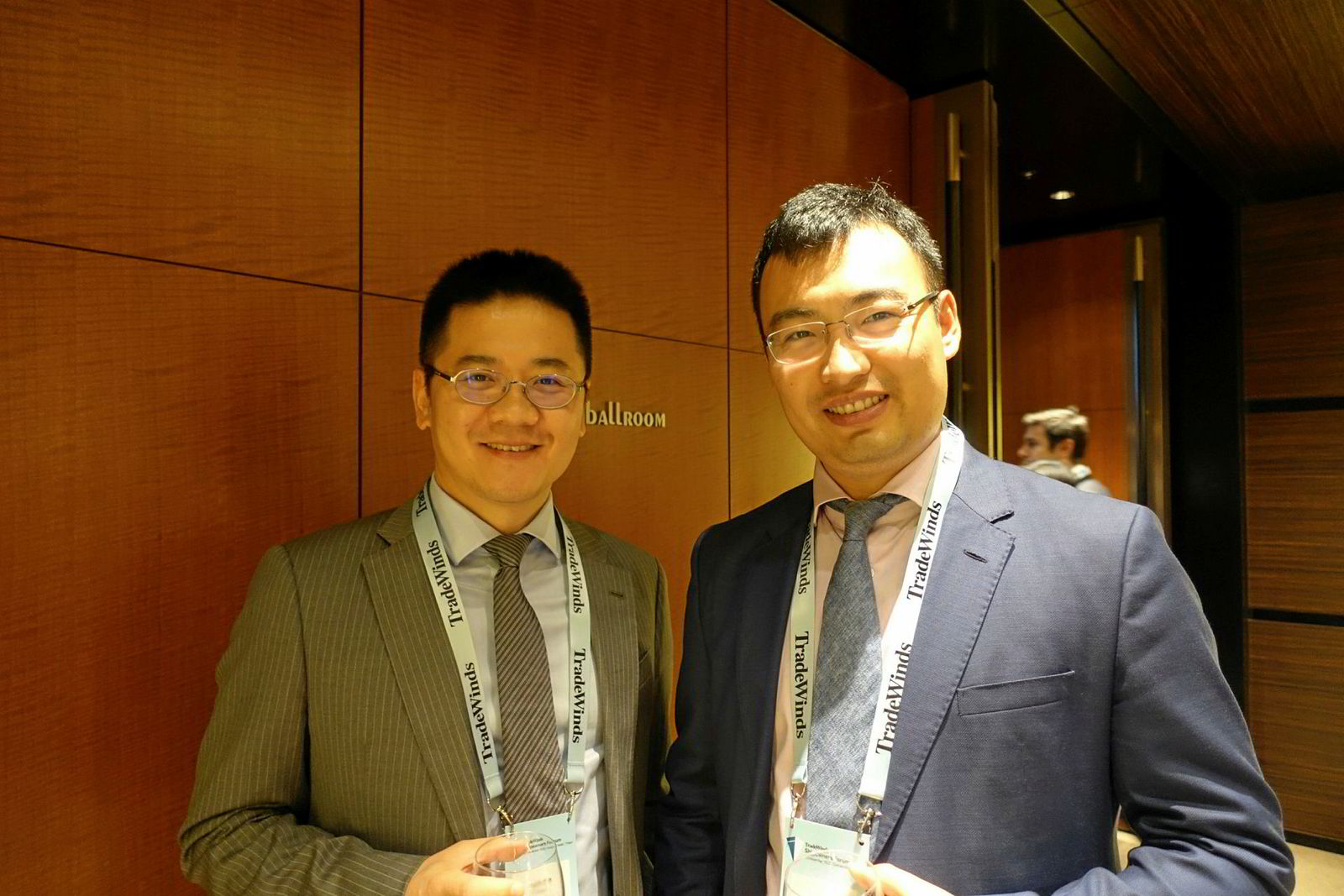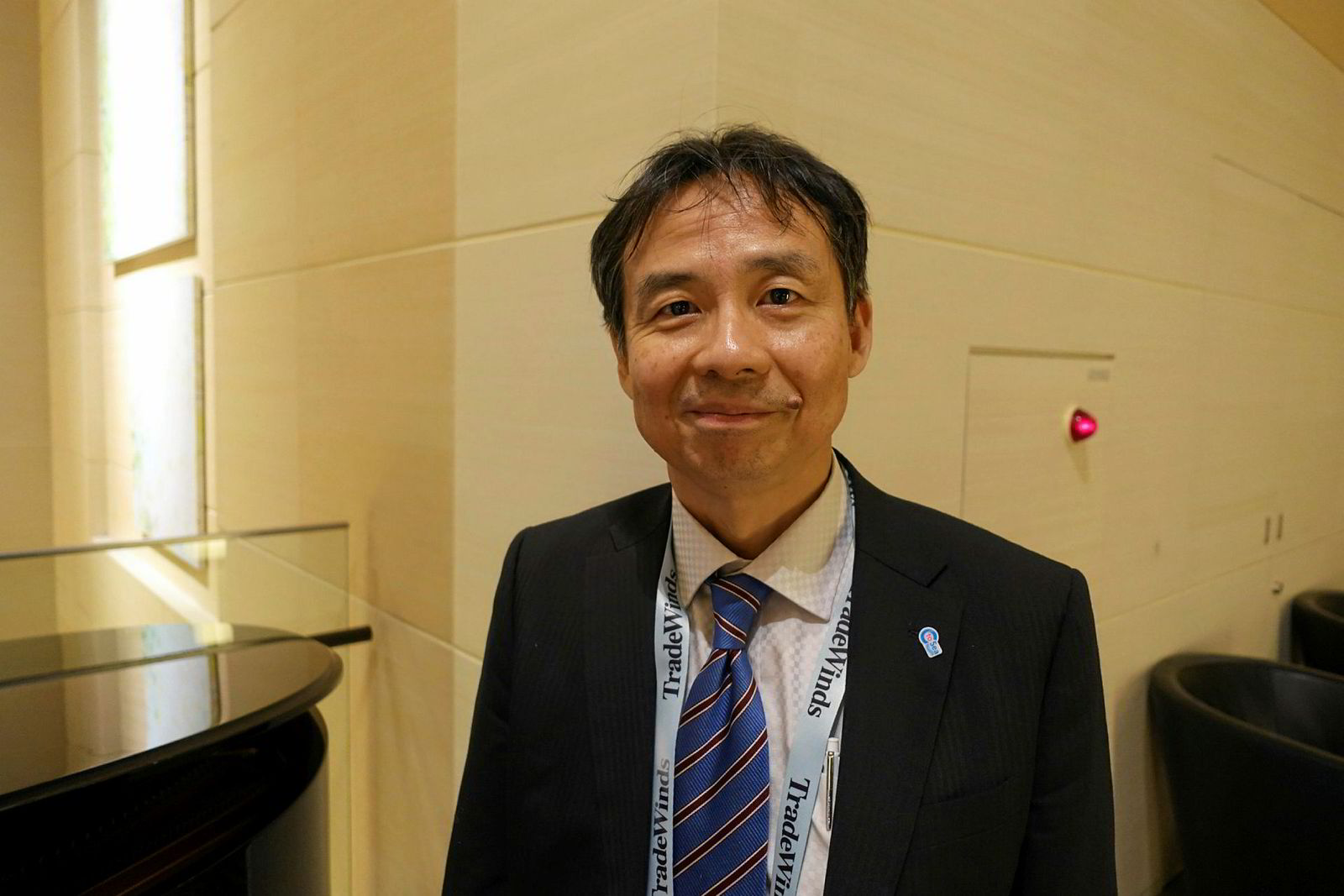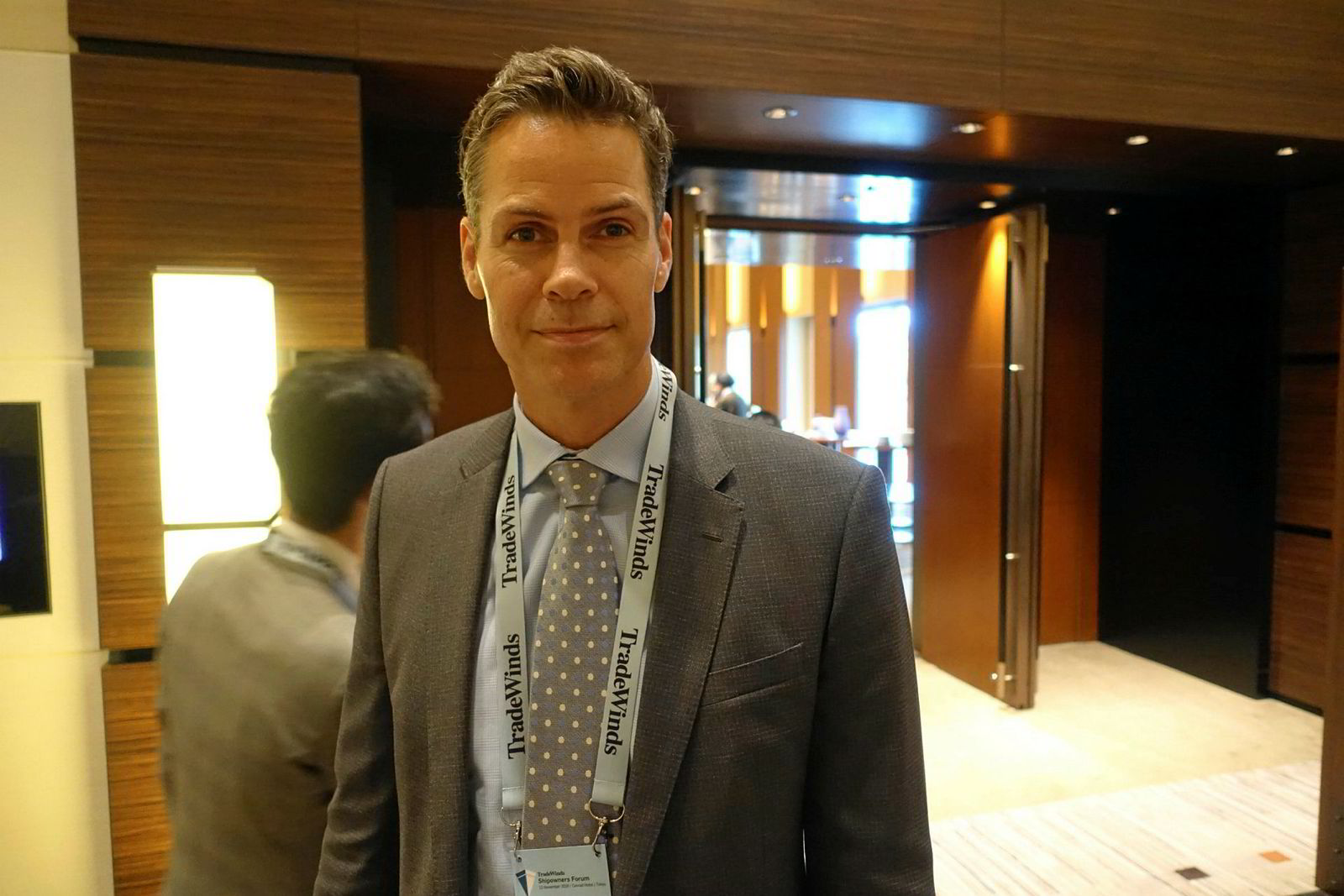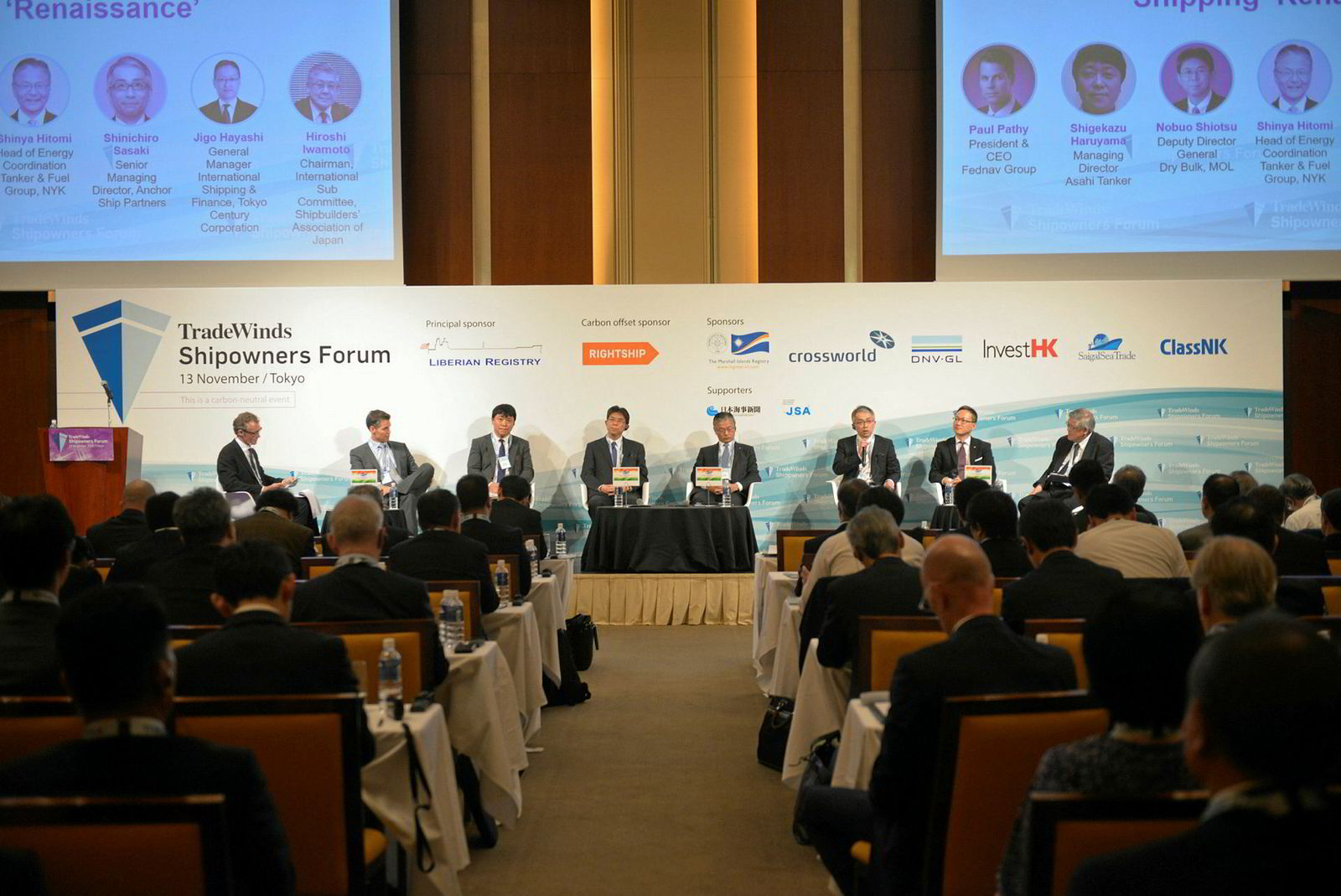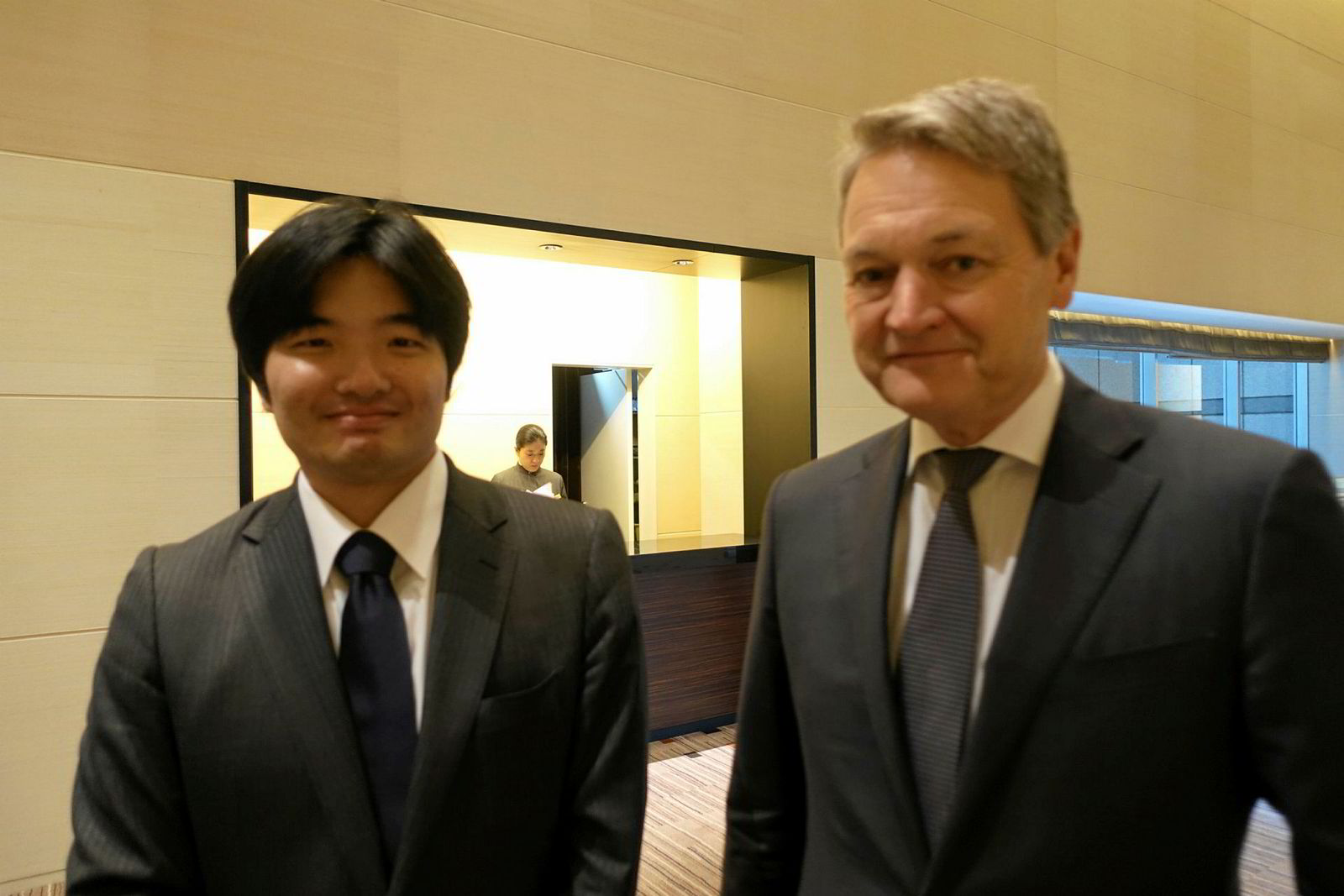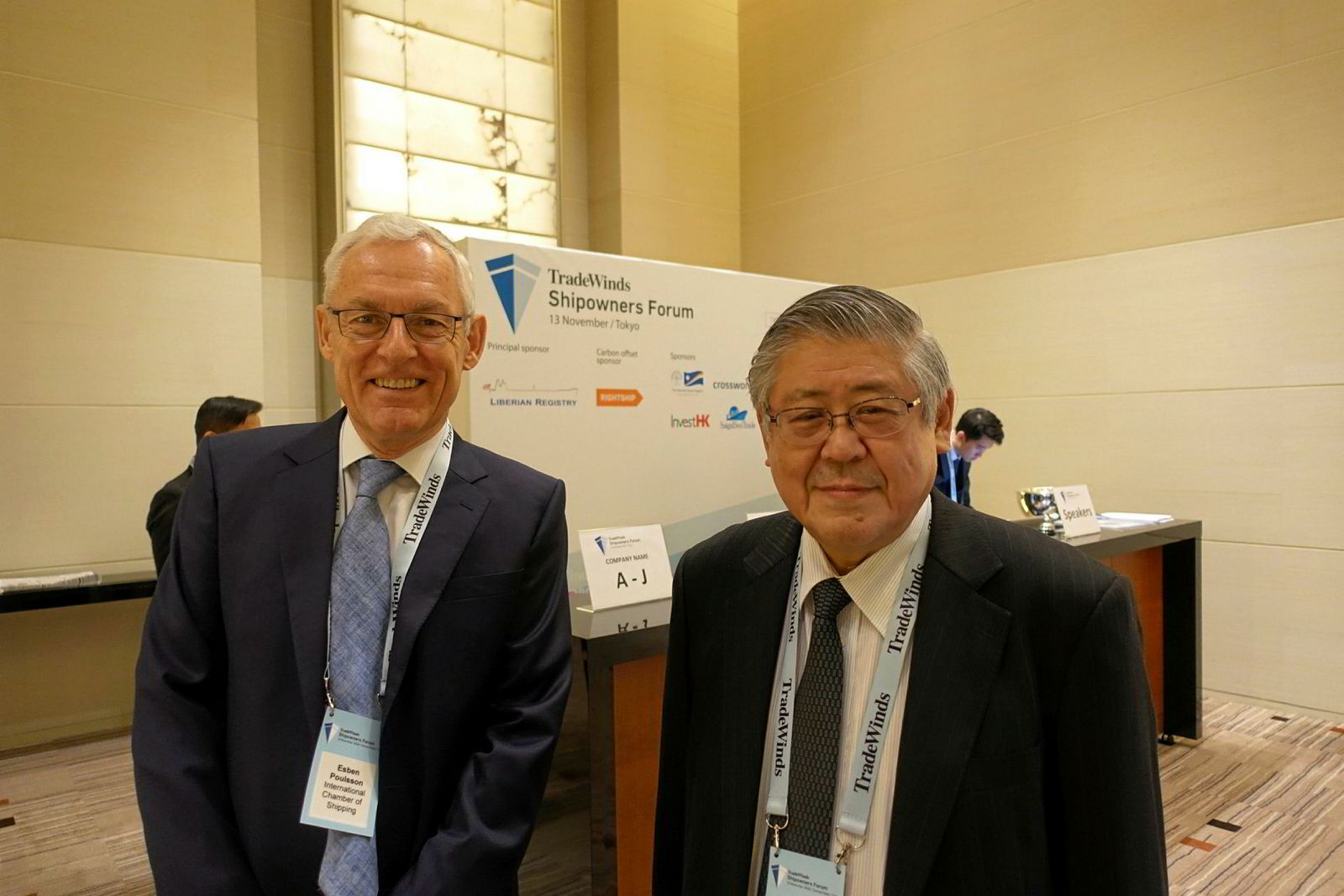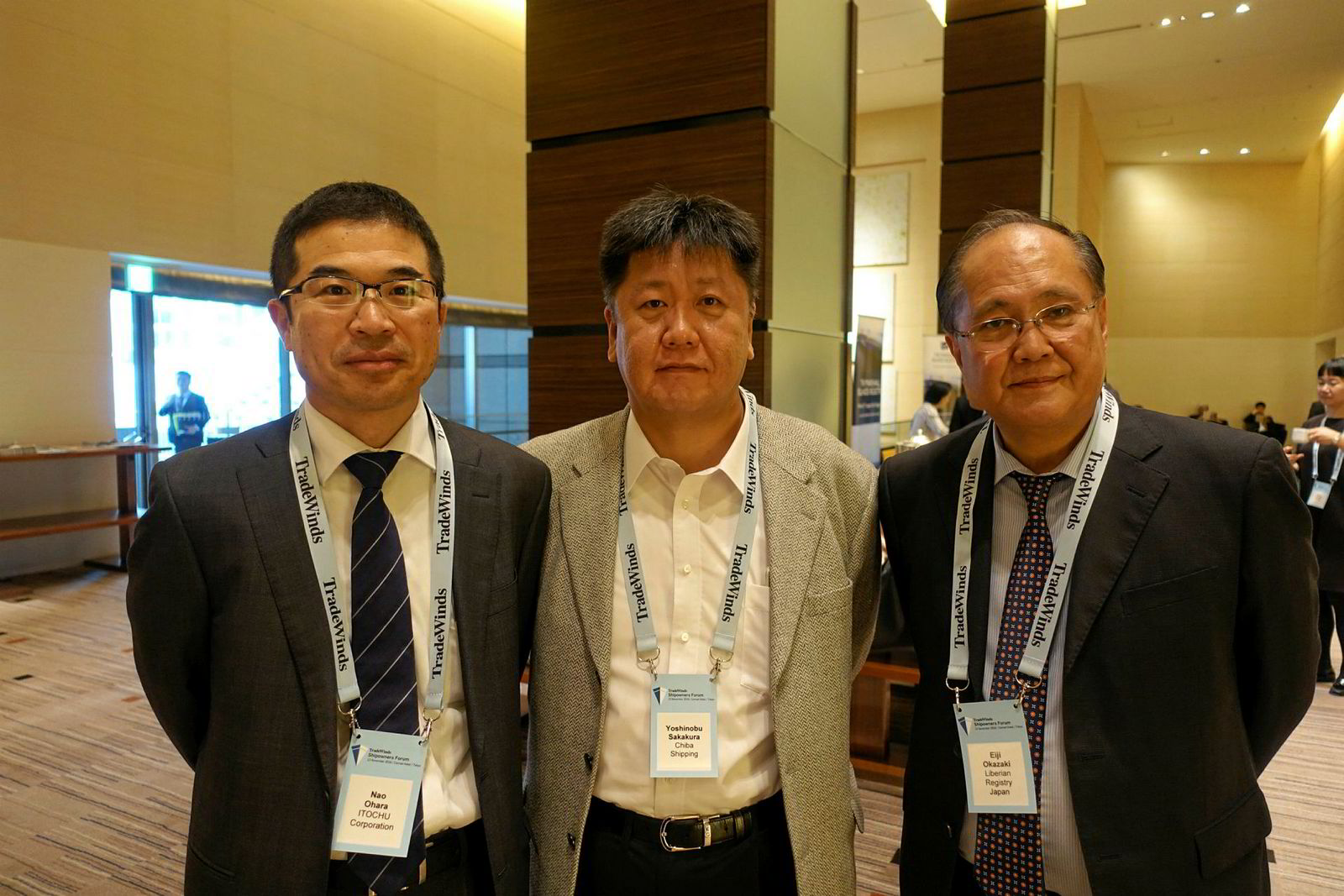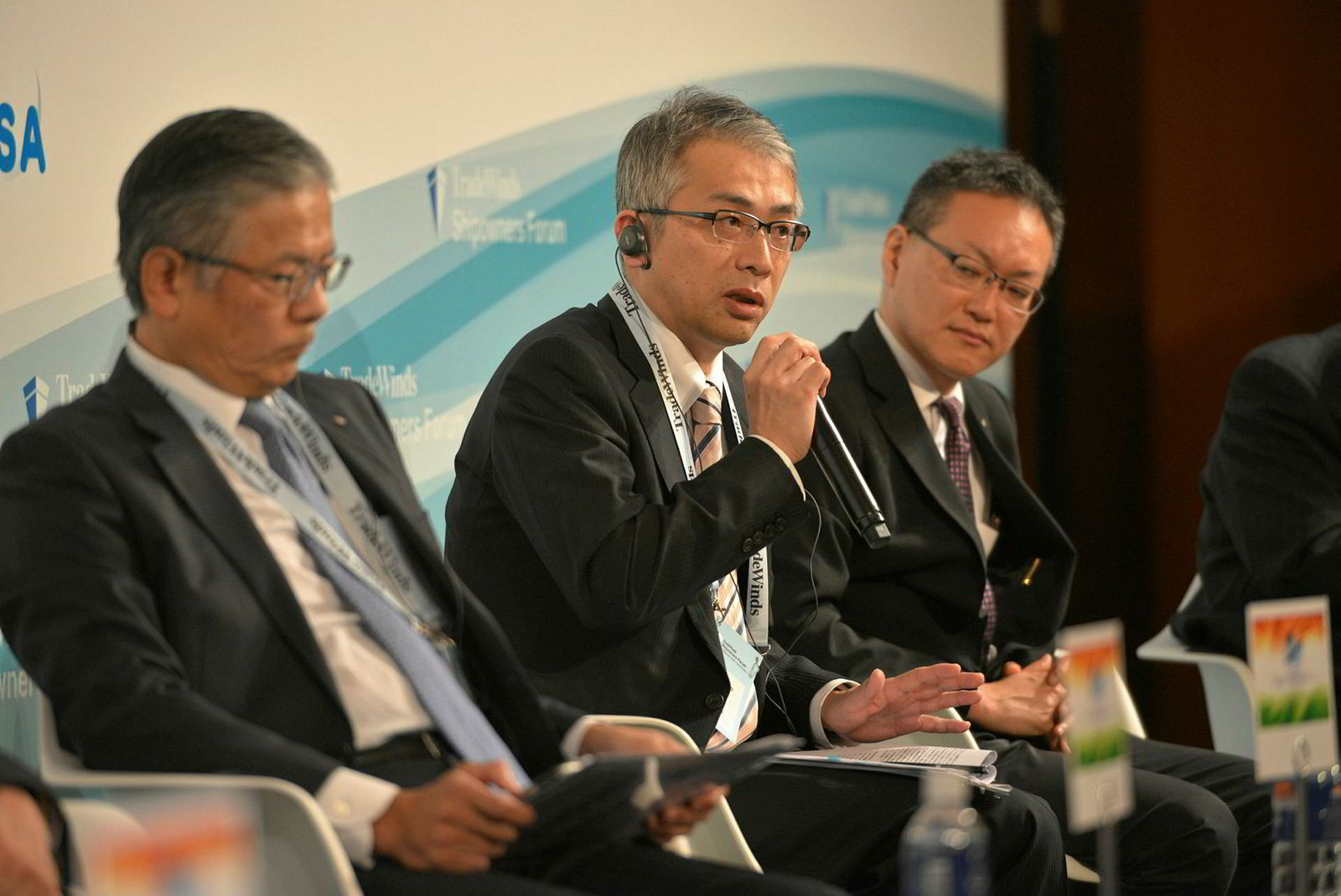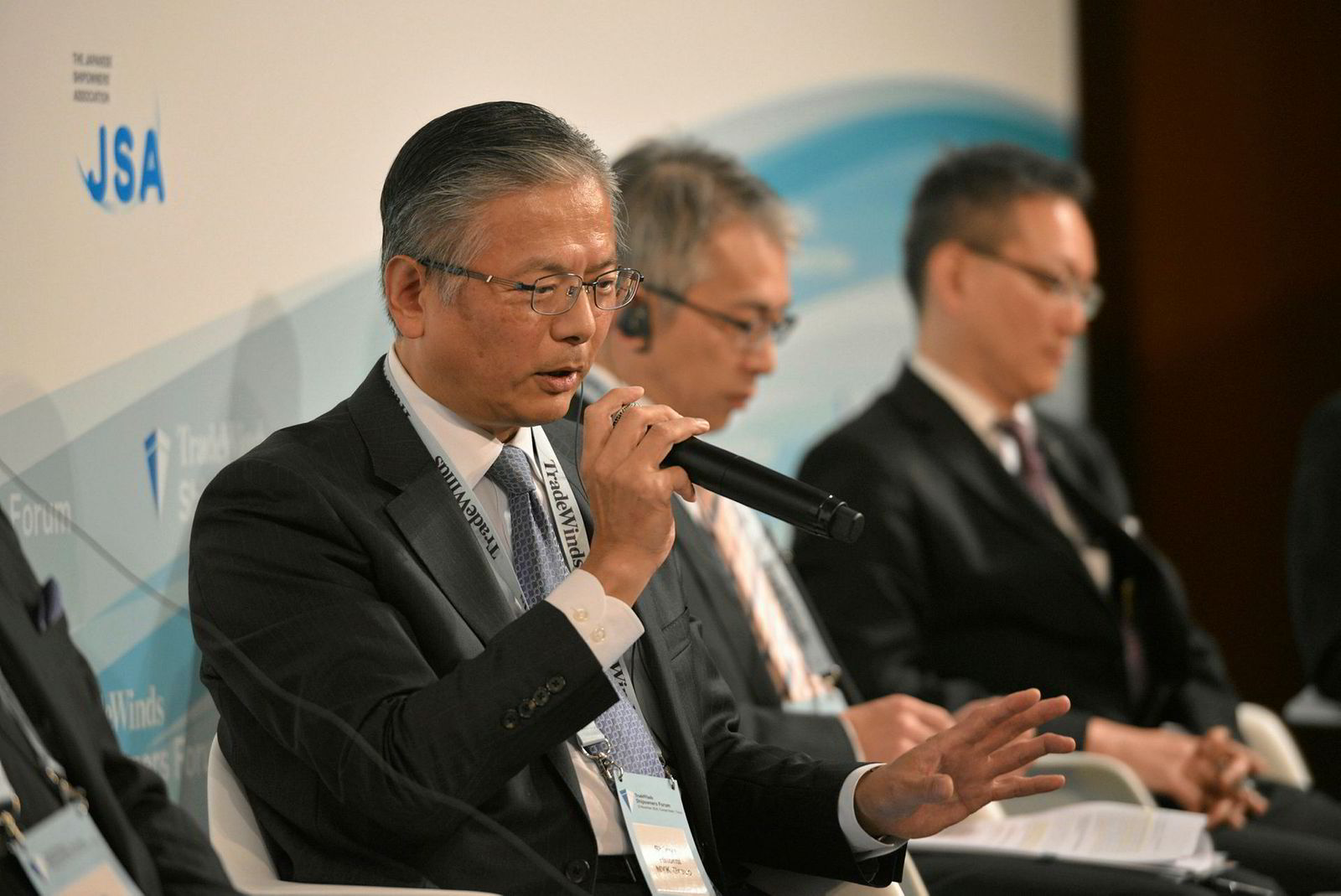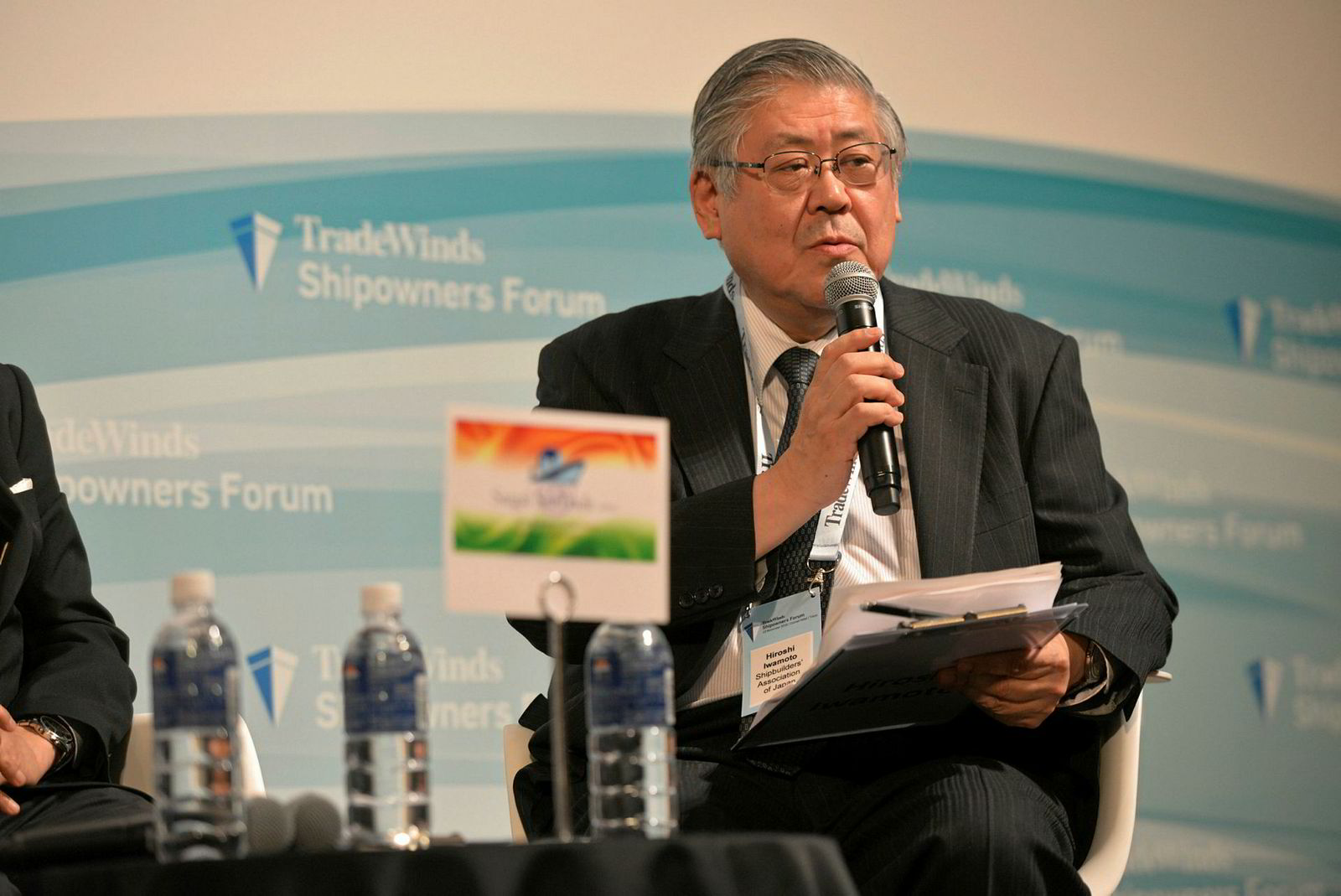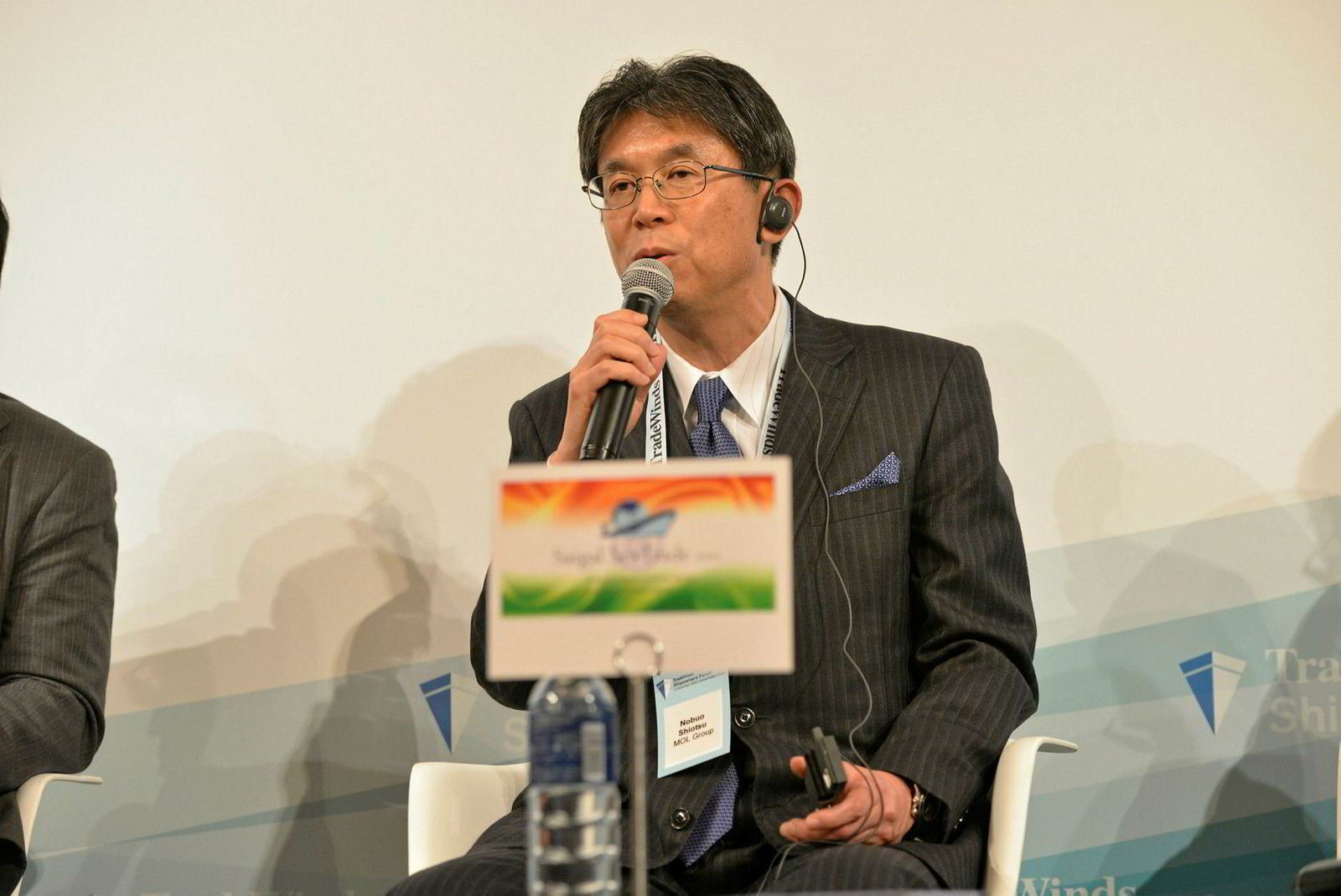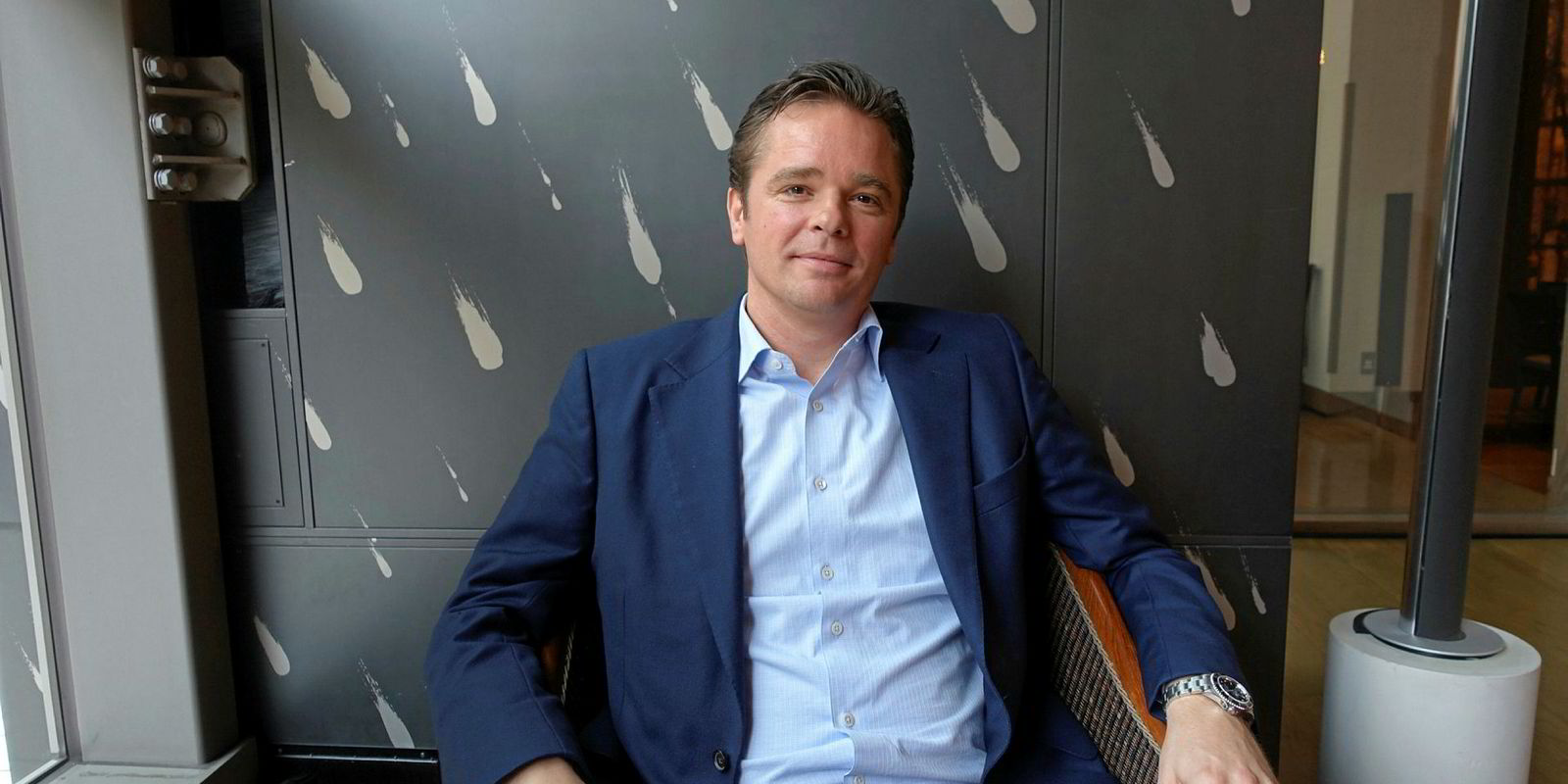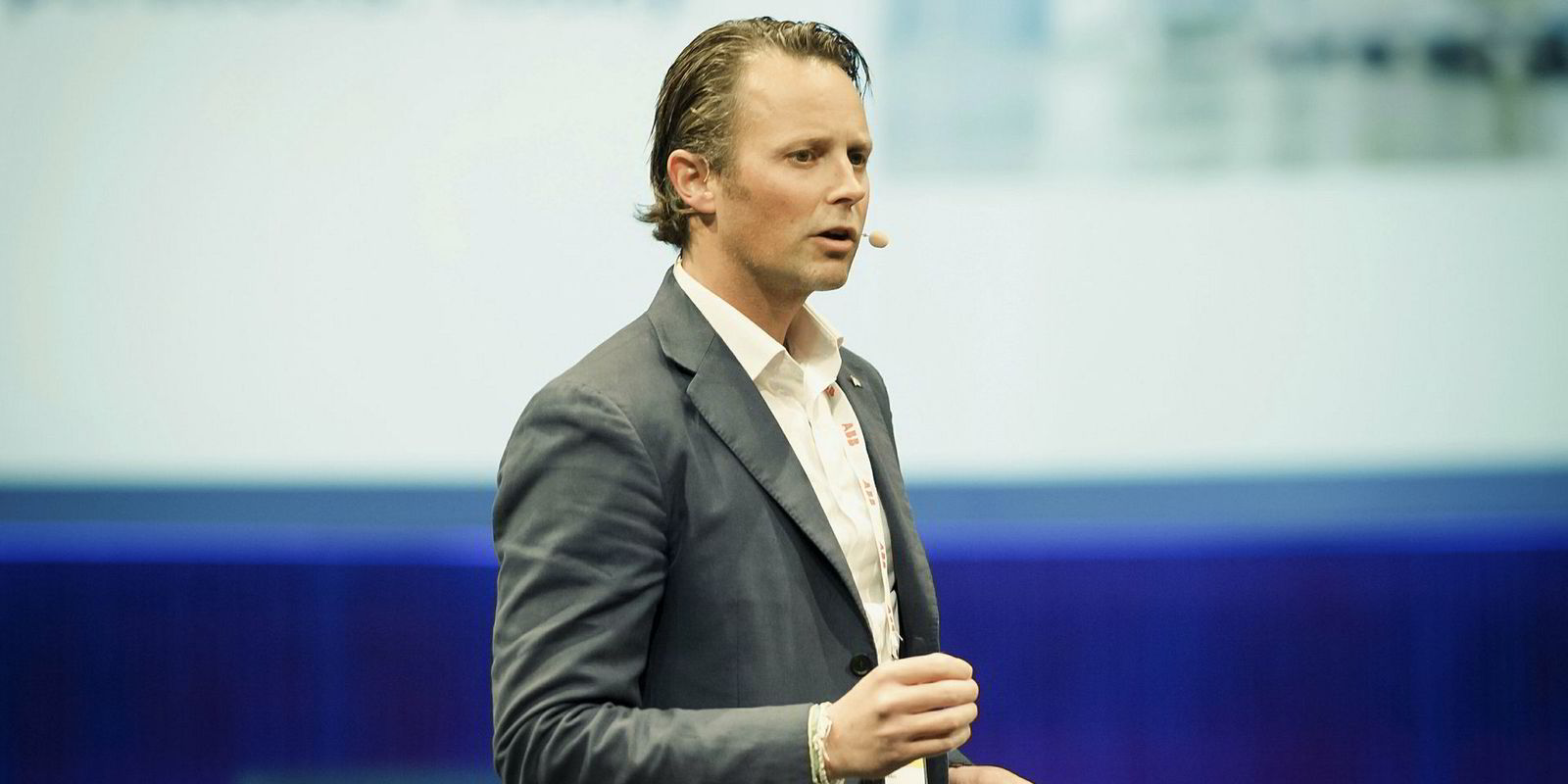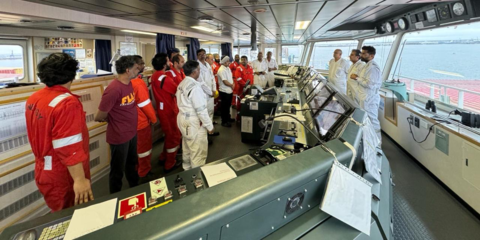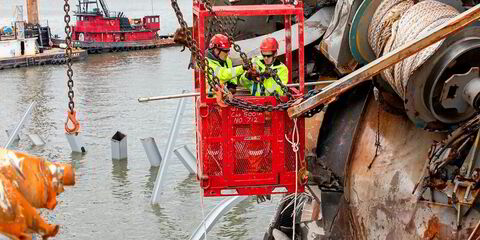The inaugural TradeWinds Shipowners Forum Tokyo provided insight into the forecast for the Japanese maritime cluster.
The event also sparked a lively exchange of views on exhaust gas cleaning systems, or scrubbers, as well as on digitalisation and transparency will help to achieve greater efficiency in the industry.
Japan is the world’s third largest ship-owning country, controlling a fleet of 168.1 million gross tonnes.
Traditionally, the majority of the Japanese owned vessels were chartered out to domestic shipping companies such as NYK Line, MOL, K Line and others.
But following the collapse of the shipping market and with flat economic growth in Japan, the big three shipping companies have reduced their fleet size, causing Japanese tonnage suppliers to look beyond Japan for charterers.
The availability of cheap shipping finance is the main reason that drove Japanese shipowners to actively order new ships.
According to Jigo Hayashi, general manager of international shipping and finance at Tokyo Century Corporation, Japan’s regional funding had become the second largest growth source for ship finance and has been outpaced only by the growth of Chinese leasing.
He told the forum that he is concerned that the cheap funding from Japanese regional banks could lead to speculative orders that add to the overcapacity in the dry bulk market.
In an effort to reduce shipping greenhouse gas emissions, Ministry of Land Infrastructure Tourism and Transport Senior Deputy Director Shinichiro Otsubo said Japan is considering in limiting ships speed limit, as TradeWinds reported earlier this week.
MOL and Asahi Tankers acknowledged they looking to install some of their vessels with scrubbers to remove sulphur oxide. But Paul Pathy, president of Canadian bulker owner Fednav, said he will be using cleaner fuel for his fleet as he does not believe in scrubbers.
Forum audiences also heard that Japanese shipyards generally agree that the shipbuilding industry is still under pressure from low newbuilding prices and rising competition from China.
To combat the challenges, Kawasaki Heavy Industries has restructured and integrating its operations with its two joint venture shipyards that it co-owns with Cosco in China. And Mitsubishi Heavy Industries is working on new ships designs to meet IMO’s decarbonisation target in 2030.(Copyright)
